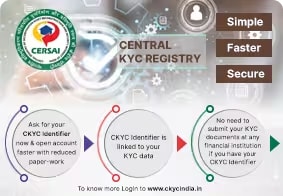Enjoy Zero Charges on All Commonly Used Savings Account Services
- About Us
- MD & CEO letter about the bank
- MD & CEO
- Our History
- Letter to Shareholders on the 1st Annual Report after Merger
- Letter to Shareholders on the 2nd Annual Report after Merger
- Letter to Shareholders on the 3rd Annual Report after Merger
- Letter to Shareholders on the 4th Annual Report after Merger
- Board of Directors
- Awards & Accolades
- News Room
- Investors
- Careers
- ESG
-
Customer care hotlineCall 1800 10 888
-
As per amendment in the Income Tax Rules, PAN or Aadhaar are to be mandatorily quoted for cash deposit or withdrawal aggregating to Rupees twenty lakhs or more in a FY. Please update your PAN or Aadhaar. Kindly reach out to the Bank’s contact center on 1800 10 888 or visit the nearest IDFC FIRST Bank branch for further queries.
-
-
FinFIRST Blogs
Finance
Union Budget 2023 Key Highlights: Industry sees responsible fiscal management in budget
Summary: The Union Finance Minister, Mrs Nirmala Sitharaman, announced the budget 2023-24 on February 1, 2023. Though modified income tax rates received the most attention and praise, this article discusses other highlights of the Union Budget 2023 that you must know about.

The 2023 Union Budget presented by Finance Minister Nirmala Sitharaman on February 1 demonstrated a commitment to growth, job creation, and macroeconomic stability.
The budget saw an increase in capital expenditure while maintaining a prudent fiscal deficit at 5.9% of GDP. It also introduced a default personal income tax regime offering much-needed relief to the middle class.
The approach received praise from various sectors, with Vaidyanathan V, Managing Director and CEO of IDFC FIRST Bank, remarking it demonstrates “Very responsible fiscal management.”
Here are all the key announcements you need to know about the budget.
Saptarishi - the Priority Areas
The budget laid down seven priority areas to achieve these broad goals. The finance minister called these seven areas “Saptarishi” - a reference to the seven sages extolled in the Vedas.
In her budget allocations, these referred to:
- Inclusive Development
- Reaching the Last Mile
- Infrastructure & Investment
- Unleashing the Potential
- Green Growth
- Youth Power
- Financial Sector
READ MORE
Let us quickly check out how the finance minister elaborated on each of these:
1. Inclusive development
The finance minister said the government’s “Sabka Saath Sabka Vikas” policy - the growth-for-all vision that the Prime Minister talked of - had benefited vulnerable and underprivileged groups such as women, SCs, STs and OBCs.
The budget explained how the process would continue, such as announcing the end of India’s “manual scavengers” - manual cleaning of sewers. Henceforth, the process will be mechanical.
Agriculture too would get a leg-up, with agri-credit target raised by 11.11% to Rs 20 lakh crore, with 63,000 Primary Agricultural Credit Societies to be computerised'.
Alongside, an accelerator fund has been proposed to push agri-startups. Plus, keeping both food security and farmers' well-being in mind, millet - a nutritious gluten-free food - will be given priority.
2. Reaching the last mile
Under this vertical, the finance minister announced the launch of an Aspirational Blocks programme that would bring government services to 500 blocks.
She also allocated Rs 15,000 crore - to be spent over three years on safe housing, clean water, road, and telecom connectivity - for the uplift of vulnerable groups under the PM-Primitive Vulnerable Tribal Group Development Mission.
Similarly, the outlay for PM Awas Yojana raised 66% to over Rs 79,000 crore.
Moreover, 38,800 teachers and support staff are to be recruited for an estimated 3.5 lakh tribal students of the 740 Eklavya residential schools.
3. Infrastructure & investment
Continuing with the Modi government’s push for developing India’s infrastructure, the budget laid out a capital investment outlay of Rs 10 lakh crore, a jump of 33%. This is 3.3% of the GDP.
This capital expenditure outlay is expected not only to boost infrastructural development but also result in increased job creation.
Incidentally, the outlay has risen consistently since 2019-20, and the latest amount is almost three times what was spent back then.
Overall, the total investment in infrastructure is projected at 4.7% of GDP.
IDFC FIRST Bank’s MD and CEO Vaidyanathan noted that, “This budget builds on the foundation laid in prior budgets. What I liked most is the consistency of approach.”
4. Unleashing the potential
This is to unleash India’s potential in technology; for instance, three centres of excellence have been proposed to be set up in top educational institutions for R&D on Artificial Intelligence.
Similarly, a National Data Governance Policy, enabling access to anonymised data, has been proposed to promote innovation and research by startups and academia.
The KYC process at financial institutions will also be simplified to meet the needs of Digital India, while measures have also been taken to enhance business activities in GIFT IFSC.
5. Green growth
Aimed at promoting an environmentally-conscious lifestyle and making India a net-zero carbon emission country by 2070, the budget allocated Rs 35,000 crore for net-zero objectives and energy security.
The finance minister also announced plans for energy storage projects, to be supported with Viability Gap Funding.
Other plans relate to generating renewable energy in Ladakh, incentivising states and the Union Territories to promote alternative fertilisers and balanced use of chemical fertilisers, and incentivising companies to take environment-friendly actions.
6. Youth power
The budget has tried to promote youth empowerment through initiatives such as the New Education Policy (NEP) and PMKVY 4.0 for upskilling in niche new-age technologies.
As part of the process, 30 Skill India International Centres have been proposed across various states to skill the youth for opportunities abroad.
In addition, stipends will be transferred directly to 47 lakh youths in three years under a pan-India national apprenticeship scheme.
7. Financial sector
The finance minister made several announcements on the financial sector as part of the “Saptarishi” the budget envisioned. Some of them are:
- A revamped Credit Guarantee Scheme for MSMEs, to take effect from April 1, 2023; Rs 9,000 crore has been earmarked for the scheme that will likely enable collateral-free credit of Rs 2 lakh crore.
- A small savings scheme for women, the Mahila Samman Bachat Parcha.
- Setting up of a National Financial Information Registry for efficient lending, financial inclusion, and financial stability.
- The deposit limit in the senior citizens' savings scheme upped to Rs 30 lakh from Rs 15 lakh earlier.
- Similarly, the maximum deposit limit was raised to Rs 9 lakh for a single account and Rs 15 lakh for a joint account under the Monthly Income Account Scheme.
- Financial support for digital public infrastructure to remain in 2023-24.
Modified tax rates
Finance Minister’s fifth budget also sought to rationalise the tax structure which is likely to benefit the salaried and middle-class taxpayers.
Tax rebate has now been extended on personal income up to Rs 7 lakh in the new tax regime, as against Rs 5 lakh till now. However, this is for taxpayers who opt for the new tax regime.
Just to understand what this means, let us assume your annual income is Rs 7 lakh currently. Under the rates applicable now, you are liable to pay an income tax of Rs 33,800 on this income; from next year, you will pay nothing.
The finance minister also raised the standard deduction under Section 87A to Rs 3 lakh for income, up from Rs 2.5 lakh. The modified rates are given below:
TOTAL INCOME (PA) TAX RATES
Up to Rs 3 lakh Nil
Rs 3 lakh+ to Rs 6 lakh 5%
Rs 6 lakh+ to Rs 9 lakh 10%
Rs 9 lakh+ to Rs 12 lakh 15%
Rs 12 lakh+ to Rs 15 lakh 20%
Above Rs 15 lakh 30%
These modifications apart, the budget has also brought down the highest rate of surcharge to 25% from 37%, thereby reducing the peak personal income tax rate to 39% from 42.7% currently.
The budget made no changes to the tax rates and slabs under the old regime, though the new income tax regime is now the default regime.
However, people have the option to choose the old regime if they so wish.
8. Reducing Litigation
This budget has also tried to facilitate the ease of doing business by reducing 39,000 compliances and making some 3,400 legal provisions less stringent.
The budget also tried to extend a helping hand to MSMEs that could not meet contractual obligations on account of the pandemic.
“In cases of failure by MSMEs to execute contracts during the Covid period, 95% of the forfeited amount relating to bid or performance security will be returned to them by government and government undertakings. This will provide relief to MSMEs,” the finance minister said.
Conclusion
The latest budget has tried to balance growth and fiscal deficit and has clearly drawn from her budget of last year. If anything, it reflects consistency.
It is also forward-looking in many aspects. Emphasis on strengthening infrastructure has meant efforts to boost internet penetration in rural areas, its Green Credit programme promises to encourage both companies and individuals to adopt sustainable practices, while benefits for startups are likely to boost entrepreneurship.
IDFC FIRST Bank MD & CEO Mr. V. Vaidyanathan summed it up thus: “Overall, a credible budget, fiscal prudence, consistency, focus on capex, rural and inclusion. Our nation is on the right track.”
Disclaimer
The contents of this article/infographic/picture/video are meant solely for information purposes. The contents are generic in nature and for informational purposes only. It is not a substitute for specific advice in your own circumstances. The information is subject to updation, completion, revision, verification and amendment and the same may change materially. The information is not intended for distribution or use by any person in any jurisdiction where such distribution or use would be contrary to law or regulation or would subject IDFC FIRST Bank or its affiliates to any licensing or registration requirements. IDFC FIRST Bank shall not be responsible for any direct/indirect loss or liability incurred by the reader for taking any financial decisions based on the contents and information mentioned. Please consult your financial advisor before making any financial decision.
The features, benefits and offers mentioned in the article are applicable as on the day of publication of this blog and is subject to change without notice. The contents herein are also subject to other product specific terms and conditions and any third party terms and conditions, as applicable. Please refer our website www.idfcfirstbank.com for latest updates.


 What's special about us
What's special about us



















